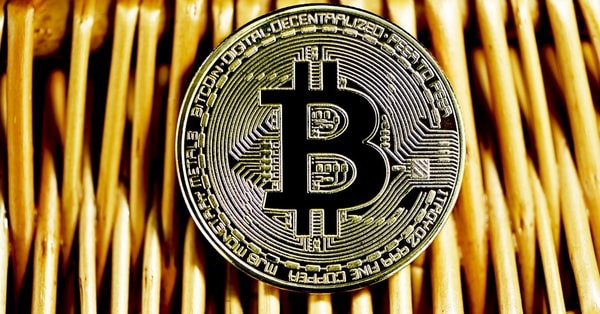The Downward Spiral of NFT Lending: TVL Hits Record Lows
NFT lending's total value locked has fallen to $8.3 million, down 97% from its peak. What led to this collapse in the once-promising market?
The NFT lending market, once a promising frontier in the decentralized finance (DeFi) space, is now facing a severe downturn. Recent data reveals that the total value locked (TVL) in NFT lending has plummeted to approximately $8.3 million, a staggering 97% decrease from its all-time high of over $300 million recorded in March 2024. This downturn can be attributed to a dramatic drop in outstanding debt, which has fallen by around 45%, from $150 million to $80 million within a short span.
According to data from DefiLlama, the NFT lending sector has reached levels last seen in 2022, marking a significant regression in a market that once appeared to be on the brink of mainstream adoption. The rapid decline in TVL is alarming, especially for stakeholders who had high hopes for the sector’s potential to revolutionize the way digital assets are utilized.
Among the platforms affected by this downturn is Arcade, a startup backed by Pantera Capital that secured a $15 million Series A funding round in December 2021. Arcade's TVL has now dwindled to a mere $300,000, reflecting a drop of more than 98% from its peak of $21.5 million just a few months ago.

The decline in NFT lending can be attributed to several factors. Firstly, the overall market for NFTs has cooled significantly after the explosive growth seen during the pandemic. The hype surrounding NFTs was largely driven by speculative buying and a surge of interest from mainstream media and celebrities. However, as the novelty wore off and investors became more cautious, the demand for NFTs—and consequently, the need for NFT-backed loans—has waned.
Furthermore, the rise in interest rates and macroeconomic uncertainties have led to a more risk-averse environment. Investors are less inclined to put their money into high-risk assets like NFTs, which they may view as less stable than traditional investments. This shift in investor sentiment has had a direct impact on the NFT lending market.
The significant decline in NFT lending TVL is not just a concern for the NFT sector; it also raises questions about the future of DeFi as a whole. NFT lending was seen as a way to provide liquidity in a market that often lacks it, enabling users to leverage their digital assets without selling them. The collapse of this market suggests that there may be deeper issues affecting DeFi protocols, including governance, security, and user trust.
The NFT lending space was once heralded as an innovative solution to harness the value of digital collectibles, allowing users to obtain loans secured by their NFTs. However, with the current downturn, many projects may struggle to sustain themselves, potentially leading to further consolidation within the industry and limiting options for users.
While the current landscape appears bleak, it is important to recognize that markets are cyclical. There are still opportunities for innovation and growth within the NFT lending space. The future may see a shift in focus from speculative assets to more utilitarian and functional NFTs that provide real-world value. For example, NFTs representing ownership in real estate, intellectual property, or even carbon credits could become more prevalent and desirable.
Additionally, as the technology behind NFTs and DeFi continues to mature, we may see the emergence of more robust lending protocols that can better withstand market fluctuations. Enhanced risk assessment tools, improved liquidity mechanisms, and greater regulatory clarity could help restore confidence in the NFT lending market.

The current state of NFT lending reflects the challenges faced by the broader DeFi ecosystem. As outstanding debt falls and TVL reaches all-time lows, stakeholders must adapt to the changing landscape. While the decline is concerning, it also offers a valuable opportunity for reflection and reinvention within the sector. The NFT lending market may be down, but it is not necessarily out. With innovation and a renewed focus on utility, the future could hold promise for this once-burgeoning industry.
For further insights and updates on NFT lending and the DeFi space, be sure to visit The Defiant.
Related Posts
Unlock Your Potential: 10 Time Blocking Tips for Productivity
Feeling overwhelmed by your to-do list? Discover how time blocking can transform your productivity with these ten essential tips.
Master Time Management in DeFi with These 5 Tips
Struggling to keep up in the fast-paced DeFi world? Check out these 5 unique productivity techniques to boost your time management skills!
Bitcoin DeFi Token BOB Soars 25% After Coinbase Listing
The Bitcoin DeFi token BOB has surged 25% after its Coinbase listing, defying market trends and drawing investor interest.
Michael Saylor Stands Firm Amid Potential MSCI Index Removal
Michael Saylor defends MicroStrategy's Bitcoin strategy amidst concerns of potential MSCI index removal, highlighting the company's unique position in the market.
10 Tips to Ace Remote Team Collaboration Tools
Struggling with remote teamwork? Discover 10 essential tips to enhance communication and boost productivity with the right collaboration tools!
Unlocking Content Marketing Success in DeFi: 10 Key Tips
Want to stand out in the DeFi space? Discover 10 essential content marketing tips for 2023 that will elevate your strategy and connect with your audience.